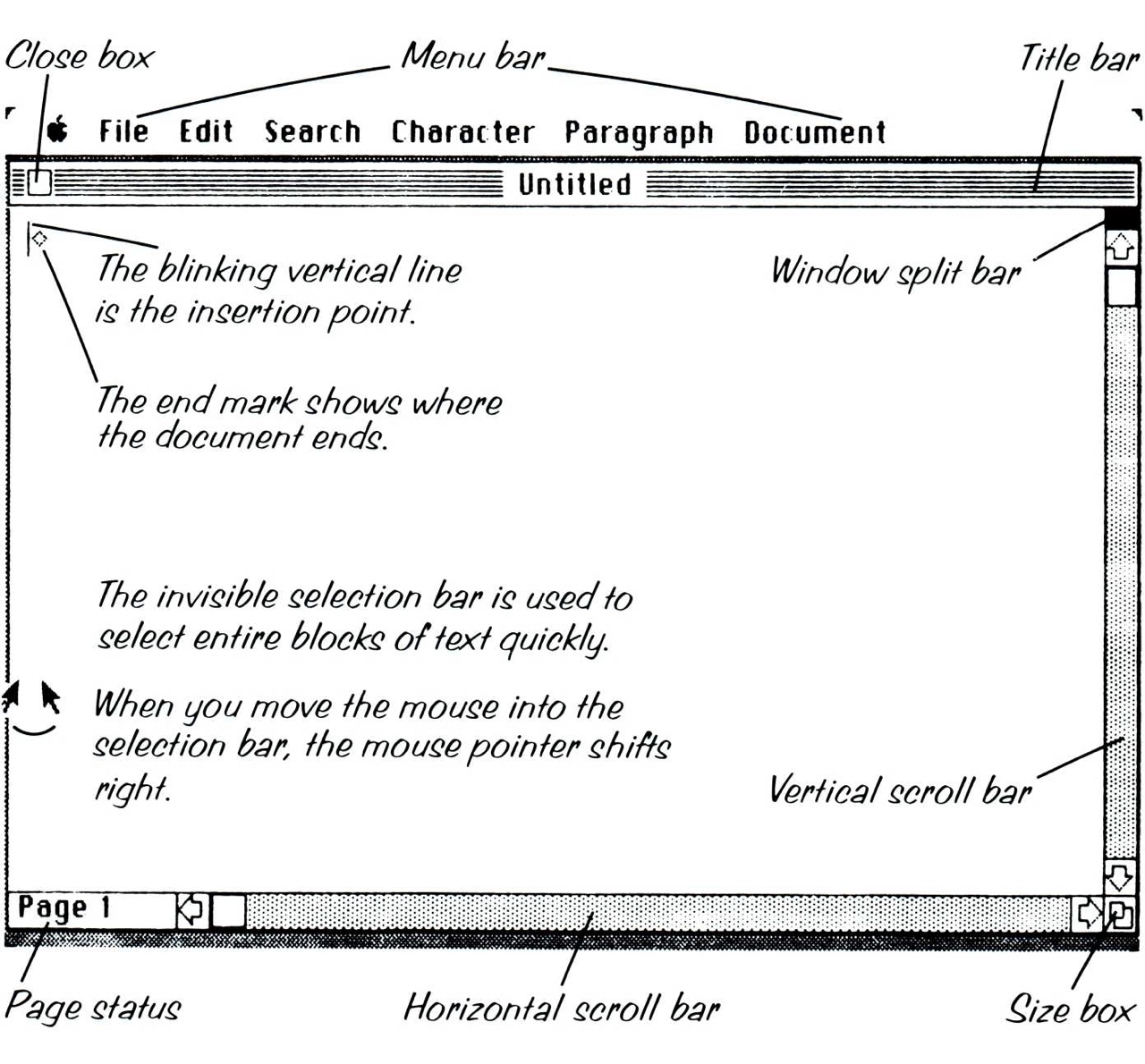The word-processor problem
Software focus in niche markets versus mass-market complication 2023-06-20 #product

Once a killer application for desktop computers, word-processors less often provide the best tool for any particular job. This creates new opportunities.
Early word processors
The first word processors I used, in my early 1990s touch-typing classes, emulated typewriters. They reproduced typewriters’ hardware-based functionality, such as tab stops, with new limited typographical innovation to bold and italic styles.

Mac OS brought significant innovation to the first good word processor I used, with its graphical user interface and multiple fonts: Microsoft Word for Mac 1.x. I loved it for the same reason I write blog posts in Apple Notes today: its simplicity.
The word count problem
When I did the university newspaper’s layout, writers used Word to write articles, which we would import into the desktop publishing application, and place on a page. Their target word counts corresponded to the planned vertical column inches. In general, journalists in print media write to length, to fill a planned space in the magazine, and may be paid by the word. Meanwhile, Word for Mac 1.0 had a minimal feature set, and no word count:

Word-processor reviews in computer magazines would complain about their missing word count feature, and write negative reviews. So word-processors added the feature, got better reviews, and became a tool for writing articles for publication in print media.
Feature escalation
In 1985, Microsoft Word for Mac 1.0 was yet to accumulate features for all sorts of document types that present-day word-processors support. But to be the best tool for a document type requires specific features.
| Document type | Example features |
|---|---|
| Print media articles | Word count |
| Form letters | Mail merge |
| Contracts | Heading numbering, track changes |
| Newsletters | Column layout |
| (Financial) reports | Tables, charts |
| Technical documentation | Cross-references |
| Expert analysis, e.g. project plan | Document templates |
| Manual or user guide | Automatic index and cross-references |
The word count problem exemplifies feature escalation due to adding support for writing additional document types. These new features expand the product’s market, at the cost of its usability and simplicity.
A comprehensive tool has a usability problem: supporting all possible document types risks leads to a tool that people successfully use to write none of them, because of the complexity and hard-to-find features. In Microsoft Word’s case, this led to Clippy telling us that, ‘it looks like you’re writing a letter’, in an attempt to help.
Initially, the software vendor benefits from feature escalation: increased revenue in this bigger market. And people who the product didn’t previously serve benefit from a new product they might choose to use. However, people who already use the product only see it get worse, as features they don’t need increase complexity.
Focused writing tools
This feature escalation product strategy eventually creates opportunities for niche tools. Instead of capturing the huge customer bases that belong to word processors and their replacements - Microsoft Word, Confluence and Notion - a simpler tool can focus on a single document type for a smaller audience. For example:
- iA Writer - distraction-free writing for initial text
- Final Draft - film scripts
- Delibr - product development epics
While the market for these tools may seem limited, a big part of a small market can still become wildly profitable. Meanwhile, each successfully established niche market chips away at what used to be one big market for writing tools.

